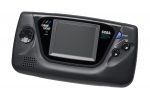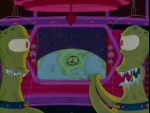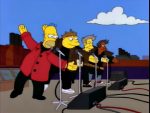I have a lot of fond memories of the Sega Genesis. It was my first console, and sparked my love of video games. However, I only ended up getting one fairly late in its lifespan. By the Christmas of 1993, it had already been on the market for five years. Which was pretty close to the end of its life all things considered. I wasn’t there when it launched. I was the tender age of three; too busy watching Care Bears to notice the excitement going on in the gaming world. But what about those folks who were there? What did that 16-bit mega power offer?
When the Mega Drive launched in Japan on October 29th, 1988, players had just two titles: Space Harrier II and Super Thunder Blade. Both existing arcade hits. Altered Beast and Osomatsu-kun: Hachamecha Gekijō would follow a month later.
When the Genesis hit North American shores on August 14th of 1989, it also came with a substantially larger lineup. Aside from the ones already mentioned, we had Alex Kidd in the Enchanted Castle, Tommy Lasorda Baseball, Thunder Force II, and Last Battle. But did any warrant the investment into the next gen?
Time to fire up the ol’ Everdrive to find out, and see how these games have held up over 32 years.
Space Harrier II
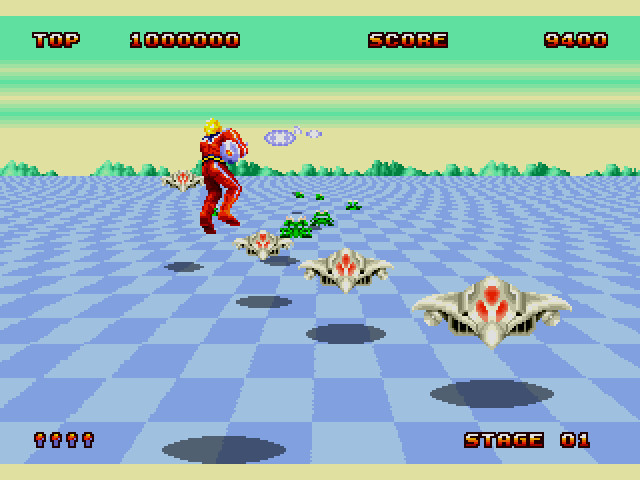
The original Space Harrier is an absolute gem. You’re a guy with a jet pack, on a mission to free the Fantasy Zone from evil Moai heads and other weird creatures. This was one of the first arcade titles to use 16-bit graphics and Sega’s “Super Scaler” sprite scaling technology. It was certainly an impressive game for the time thanks to its pseudo-3D graphics and kicking soundtrack. Heck, Space Harrier still looks and plays great some 35 years later.
The Genesis never got a port of the original game, but rather its own timed exclusive sequel.
Space Harrier II is surprisingly not terrible. Since the base Genesis can’t do sprite scaling, there’s a little pre-rendered trickery happening here. The results I must say are quite impressive given the hardware limitations. It’s not quite as smooth as the arcade original, but offered a great taste of the console’s potential. It’s quite a bit of fun too. Is it as good as the original Space Harrier? No, but it certainly did leave a strong first impression.
Super Thunder Blade
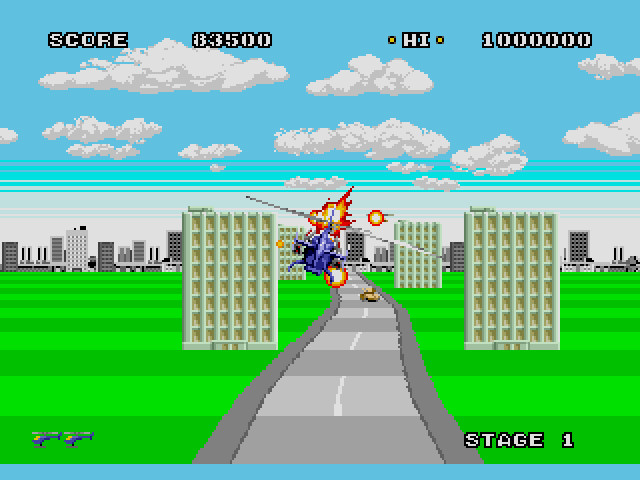
Super Thunder Blade is another port of Sega’s Super Scaler arcade games. This is a lot like Space Harrier, except with a helicopter. You fly around, shoot enemies, try to dodge buildings and enemy fire. You know, the sort of things you normally do in a helicopter.
I’m not going to beat around the bush. This game is awful. Your heli is incredibly sluggish to control. It’s like flying through cold syrup. Not to mention the controls are backwards. This is something I normally prefer for flight games. Pull back to go up and what not. However, it just does not feel natural here, at all. Especially coming off how tight Space Harrier II felt. This is one of those games that’s hard for all the wrong reasons. You feel like you’re fighting poor mechanics more than the actual enemies.
Super Thunder Blade is quite a downgrade over the arcade version. Not just in the graphics department. Even contemporary reviews were mixed. The Games Machine called it “not quite as super as the title makes it out”, while EGM was critical of its choppy visuals and poorly mimicked sprite scaling. I feel bad for anyone who picked this up instead of Space Harrier II.
Altered Beast

Rise from your grave! Athena has been kidnapped! Zeus has resurrected a legendary Greek hero (you) to save her from the clutches of the underworld.
Altered Beast is a fairly boilerplate side-scrolling beat-em-up. You punch, you kick, you cause enemies to explode. It’s that simple. There’s no tricks or special moves to memorize here. Its main gimmick rather involves grabbing power ups by defeating blue wolves. Each one you collect makes you progressively buffer, and hit that much harder. Collect three in a stage and turn into your beast form. There are five stages in total, each with a unique form. Werewolf, weredragon, werebear, weretiger, and werewolf again, but gold this time! All with unique special abilities.
This is a faithful port of the arcade original. And it should be, since the Genesis was based on the Sega System 16 board. It was also the pack-in title for the North American launch, so it introduced most early fans to that juicy blast processed power.
Altered Beast seems to be one of those games Sega fans either love or hate, largely depending on when you first encountered it. In my opinion, it’s just okay. The action is satisfying enough, but falls far short of being great. At this point, I don’t think developers understood how important it is for a beat-em-up to “feel” right. It lacks the frantic fights and hard impacts we’d see in later games like Hyperstone Heist or Streets of Rage.
Beast is also very short and relatively easy. A skilled player can usually beat it in about 10 minutes. That’s the biggest problem with these arcade ports. They were designed for short bursts of play at a coin-op rather than longer at-home sessions. There’s little reason to revisit it after completion. For 1988 though, when the only competition was Bad Dudes on the NES, this would have seemed like a miracle.
Alex Kidd in the Enchanted Castle
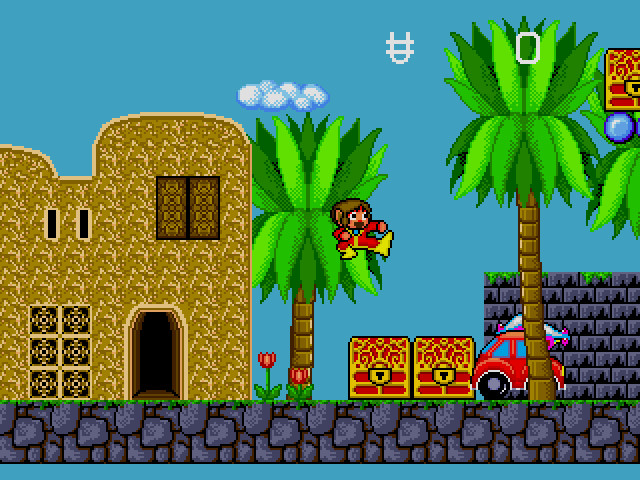
Alex Kidd was Sega’s first attempt at a Mario style mascot. Some of his earlier Master System games were pretty decent. Shinobi World is worth checking out. But this, well… it’s a thing that exists.
Enchanted Castle is part platformer, part beat-em-up. Both those on their own are fine enough. Combined, the whole thing feels poorly executed. Plus it has these weird rock-paper-scissors minigames. These aren’t fun at all. That’s what you want in your children’s platformer; a game of chance where you die if you lose. That’s not frustrating in the least!
I will say that Alex Kidd looks pretty good for an early release. It’s bright and colourful, and the animations are decent. The art design is quite lacking though. The music is okay, but gets very annoying very quickly. It’s not Sonic. Not even close. In their original 1989 review, UK games magazine Raze called it “uninvolving and ultimately repetitive”, concluding that it’s one of those games you don’t mind receiving, but would think twice about buying. There’s a reason why the Kidd was replaced with a hog.
Thunder Force II
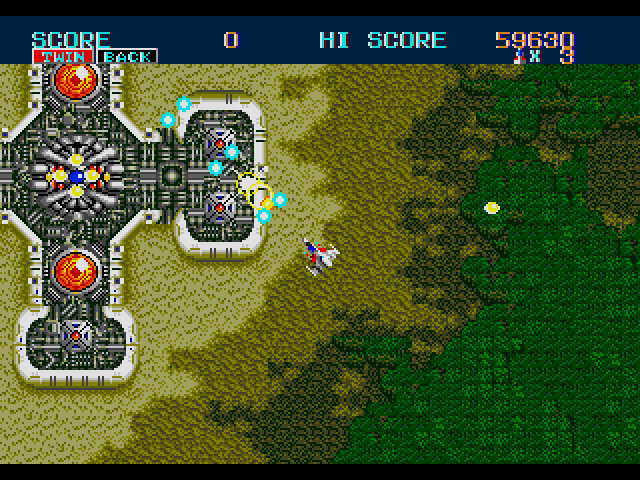
For some reason, space ship shoot-em-ups were all the rage in Japan in the late 80s. There are so many of them it’s almost absurd. Especially considering that each game is six and half a dozen of the others. I’m not a fan of this genre. Especially the bullet hell games that seemed to be the bee’s knees back then.
Sega of course had several shmups. Zaxxon, Fantasy Zone, and Thunder Force. Most people are probably familiar with the third entry in the franchise. It’s the one that tends to pop up most in compilations. Thunder Force II was the first to hit the Genesis though. Unlike its successor, it’s a top-down game where you freely navigate a large map. But you still shoot enemy ships and land bases, dodge bullets, and collect power ups for your weapons; the standard stuff.
I died a lot playing this, as one would expect. I said I didn’t care much for the old 2D shmups, and I still don’t. However, I think this may very well be the best launch title so far. The graphics are in line with later Genesis releases. Sprites are detailed, and everything is crisp and colourful. The gameplay action is also silky smooth. While the voice samples leave something to be desired, the soundtrack is fantastic. That FM synth chip is being put to strong use here, rather than the tinny audio that’s all too common in other Genesis games. This would be the one I would have gotten at launch.
Tommy Lasorda Baseball
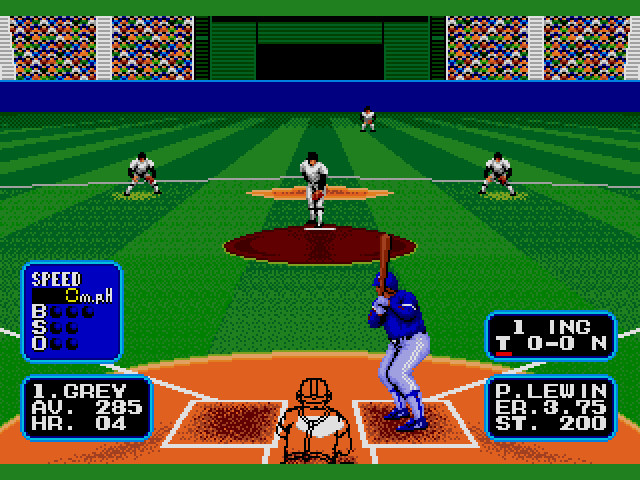
Sega made a name for themselves in North America as the platform of choice for sports aficionados. Tommy Lasorda Baseball was the first such title for the Genesis, and the first to feature a celebrity endorsement. Lasorda had quite the baseball career; playing, coaching, and later managing the LA Dodgers. He was also apparently known for obscenity-laden tirades; a man after my own heart. And at 93, he’s still alive; presumably swearing up a storm.
When it comes to Tommy Lasorda Baseball, I’m about as good at it as I am at Real World Baseball. That is to say, not very. I couldn’t figure out how to hit the ball. Not that I was bothered to spend enough time to learn. Sportsball is not my thing. Overall though, this is pretty decent for a 16-bit baseball simulator. Its graphics look great and it’s got a catchy soundtrack. There’s even some nice pseudo-scaling effects on the ball when you hit one for the bleachers.
Like any good sports sim, there’s a metagame underneath with player stats affecting hitting and pitching odds. Unfortunately, while 26 MLB cities are represented, players and teams are entirely fictional. There also seems to be no variation in stadiums. While you certainly wouldn’t want to put down MLB The Show for this, it would have been a lot of fun for baseball fans.
I want to add that the box art for this game is hilariously bad. It looks more like Bill Clinton than it does Lasorda.
Last Battle
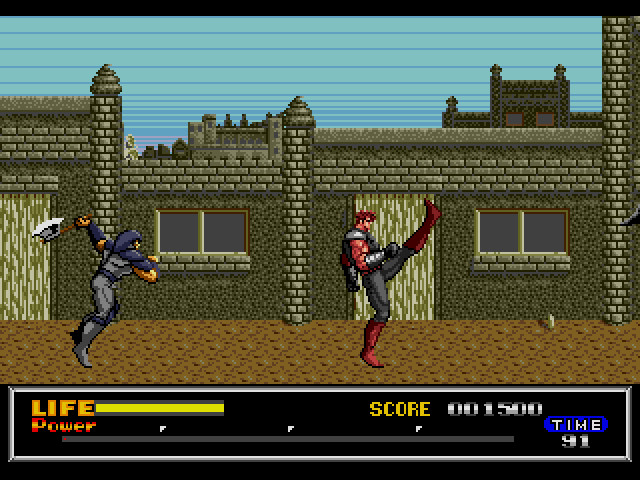
Set in a post-apocalyptic wasteland, martial artist Aarzak must defeat the evil fighter Duke, and three generals who have kidnapped his girlfriend. If you’re getting some major Fist of the North Star vibes here, there’s a good reason for that. Yep, Aarzak is supposed to be Kenshiro. This is one of those cases where the game was renamed and slightly altered for North America because Japan thought we wouldn’t understand the source material.
As far as the game goes, it’s Altered Beast with a spiffy coat of paint. Complete with a lot of my same issues. I will say it does look great. Sprites are big and detailed for such an early Genesis title. Backgrounds are also decent. Gameplay is fairly uninspired though. Enemies are easy to tear through, and even the early boss I encountered was a cakewalk. Seems like it’s another one of those games a skilled player could easily barrel through in under half an hour. While it has a reputation for being a bad game, it isn’t. It’s just painfully okay. There’s certainly far better Fist of the North Star titles out there. I suggest Lost Paradise on the PS4, also by Sega. There’s something magical about Kenshiro having Kiryu’s calm, baritone voice. You can skip this one unless you’re a die-hard fan.
Osomatsu-kun: Hachamecha Gekijō
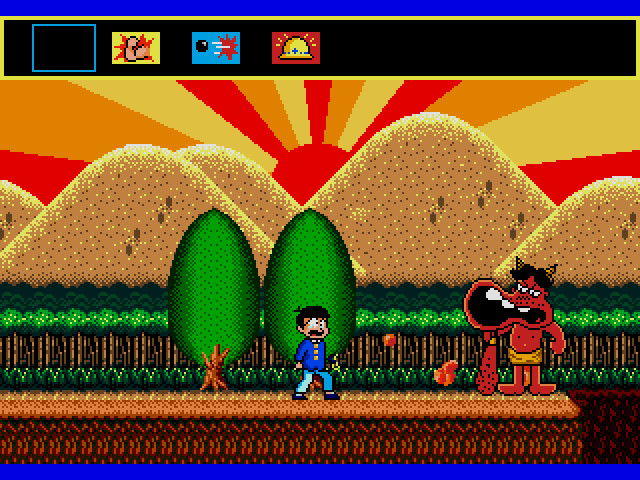
Remember how I said Japanese developers like to alter certain titles because they’re “too Japanese” for Western markets? Well, they may have a point with this one. I’m not familiar with the Osomatsu-kun character, though this game certainly lives up to its “Nonsense Theatre” subtitle.
I mean, look at it. Rising sun in the background against a bamboo forest. You play as a kid in a school uniform, fighting a big-mouthed Oni with a bad teenage moustache. The second level has you fighting crabs with bouffant yakuza perms and big teeth. Yep, this screams Japanese kids TV in the 80’s.
Is the gameplay any good though? Well, it’s alright. You have a slingshot you can attack enemies with. There’s also some light platforming here. Level design is a bit confusing. I fell down a pit only to emerge in a cave. Once I got through that, I was sent back to the beginning of the first level. So I didn’t die, but might as well have? There’s also these weird huts you can entre to get tossed to different, seemingly random screens. It’s just pure chaos.
Overall, Osomatsu-kun is nothing special. Nor is it different than many games that came before it on the Famicom and Sega Mark III. However, it’s a great game from a technical standpoint. Sprites are big, colourful, and detailed. Even some cool palette swapping effects to animate the backgrounds. Definitely unlike what people were used to seeing on 8-bit systems.
If I were looking for a kids game back in 1989, this is heads and tails more enjoyable than Alex Kidd and the Enchanted Castle. However, I can see why it was never localized for Western markets.



